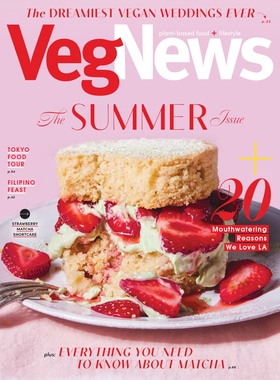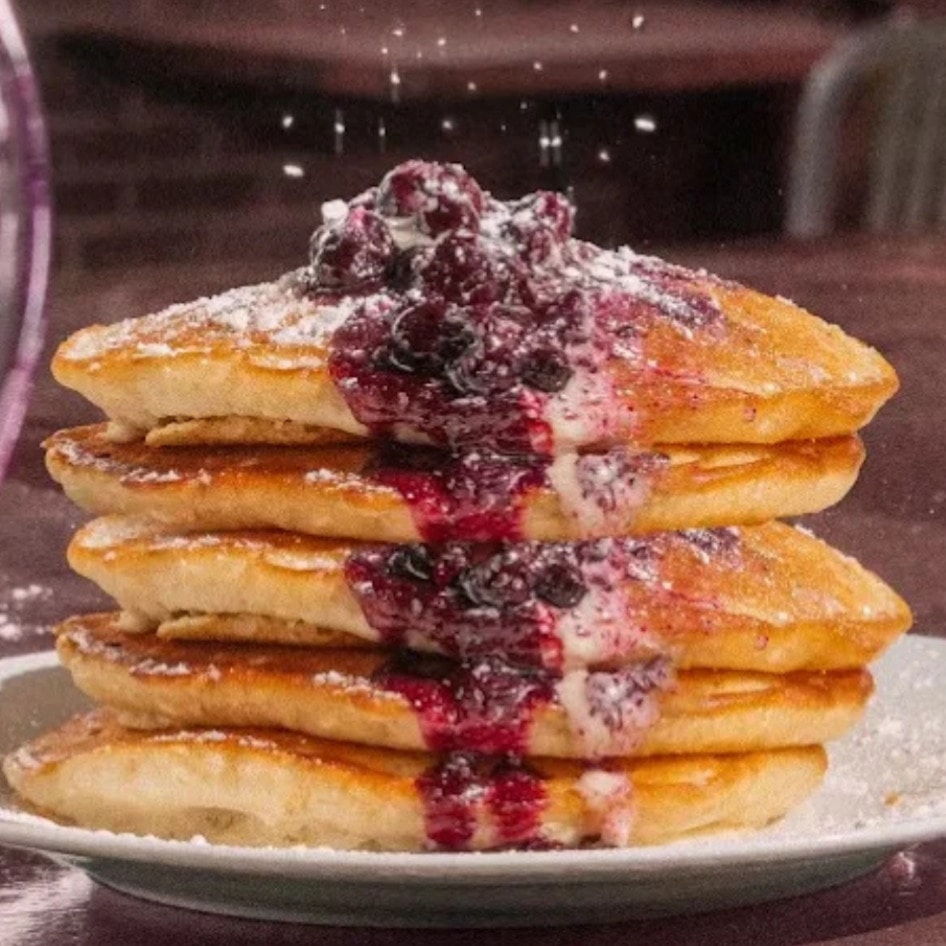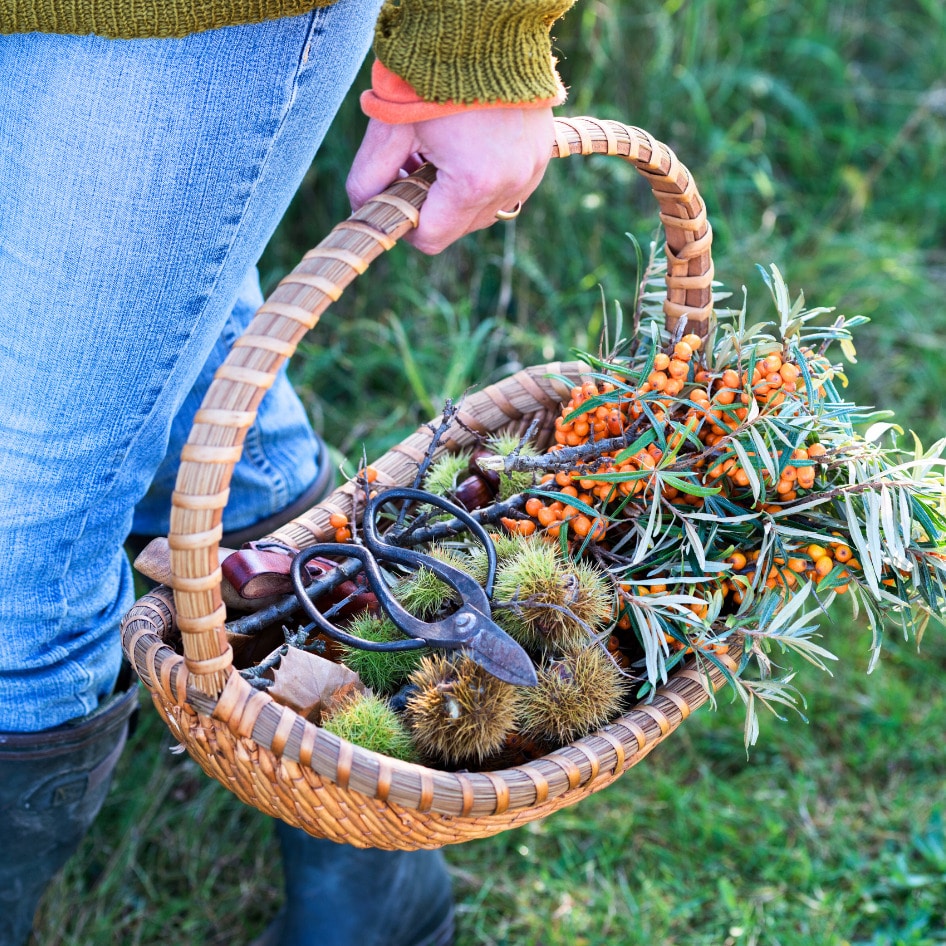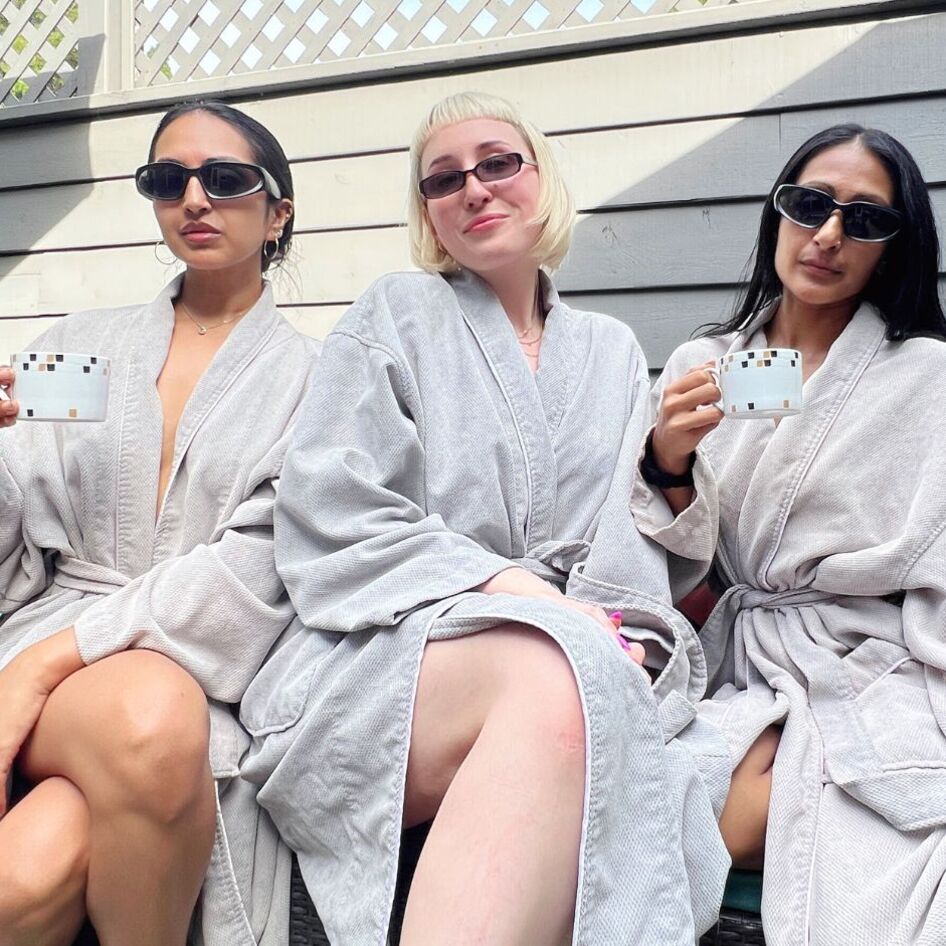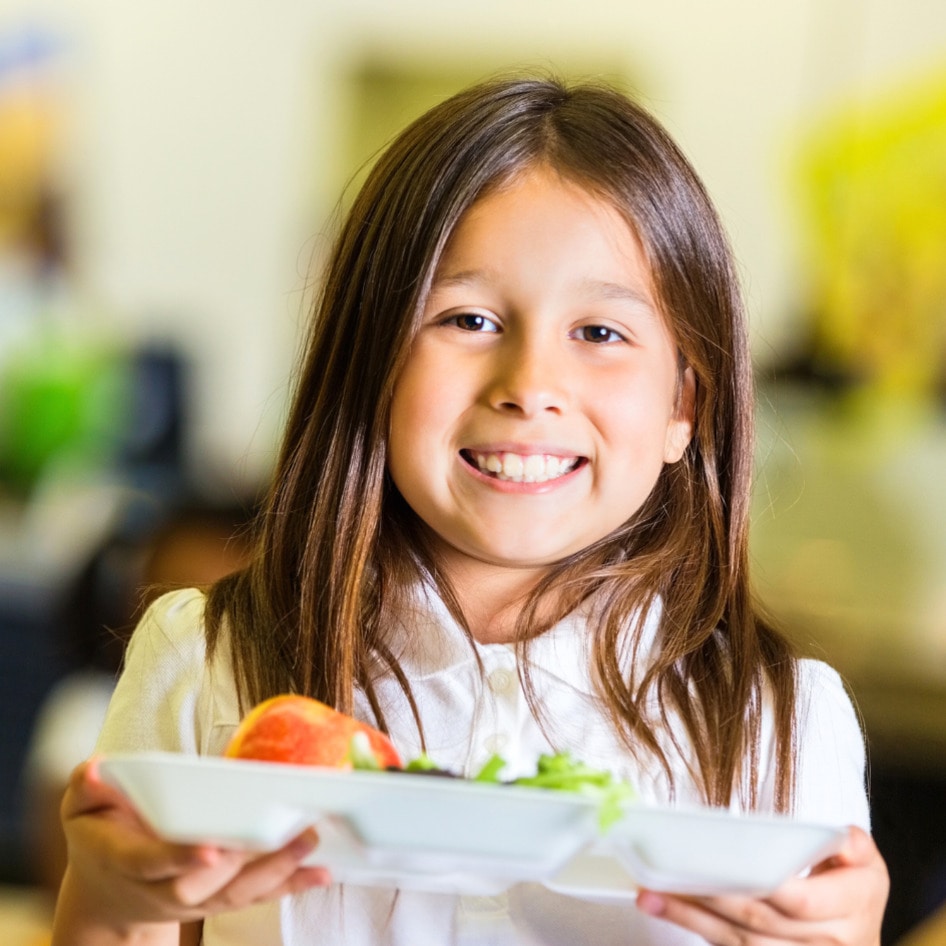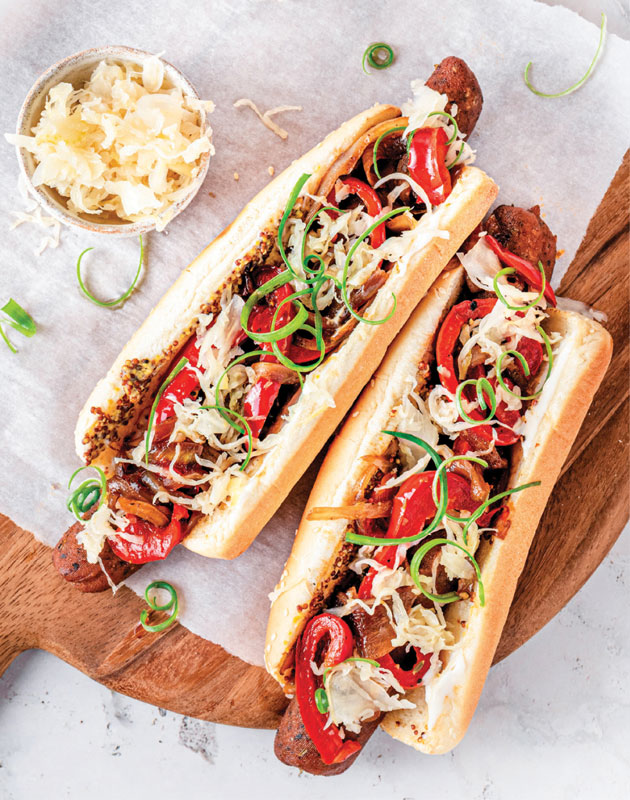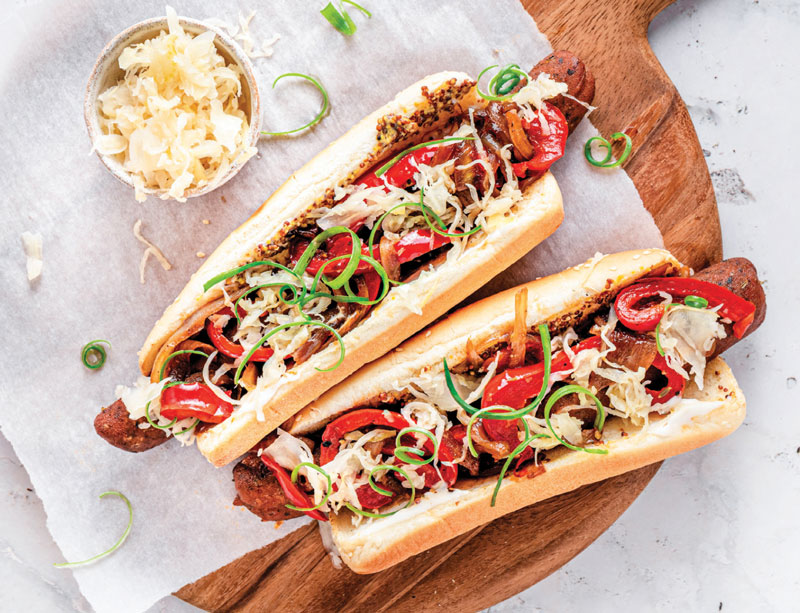Real Talk With Vegan Is Love’s Ruby Roth
The children’s book author fills us in on the acclaim and controversy surrounding her recent book.
May 14, 2012
From The Washington Post to the Los Angeles Times, major news outlets all over the country have been talking about a new book—and the surprising part is that it’s a book for children. Vegan Is Love is the second book from artist-author Ruby Roth, who also penned 2009’s That’s Why We Don’t Eat Animals, aiming to educate youths about the positive impact that they can have on their health, the environment, and the well-being of animals through personal lifestyle choices.
We caught up with Roth mid-media frenzy to hear her response to the controversy surrounding the book, her biggest influences, and the real reason why the veganism movement will only grow larger.
VegNews: What initially inspired you to go vegan, and how does it overlap with your motives as an artist?
Ruby Roth: My veganism started as a health experiment about nine years ago, and that worked out really well. I tried it for a summer and I never went back. And I’ve always been an artist. I double majored in art and American studies. I was always interested politics and justice and the underbelly of American history and culture. And so when I decided to create this book, it seemed like the perfect melding of all of my interests.
VN: What appealed to you about writing books for children, specifically?
RR: I think that it’s never too early to learn how our choices affect the public realm. I think with the state of our nation economically, environmentally, and with health, there’s no time to waste with teaching the next generation how to live consciously and healthfully.
VN: What were some of the books that were most influential to you as a child?
RR: [That question is] very timely with Maurice Sendak’s recent passing … Where the Wild Things Are! That’s a big one. Margaret Wise Brown’s Goodnight Moon. My all-time favorite is The Story of Ferdinand by Munro Leaf. I think it’s one of the most perfect books in the history of books, with the illustrations and the text. I literally have it on my nightstand.
VN: How did the response to your first book, That’s Why We Don’t Eat Animals, compare to the response you’re experiencing with Vegan Is Love?
RR: They both received tremendous support and a worldwide audience, but at the same time, they both were on the receiving end of a lot of controversy as well. And I think with this book, Vegan Is Love, which has sparked this national discussion about children and veganism, we see that although plant-based diets are found throughout history and throughout the world, that the American public is not quite familiar with veganism in the mainstream. I expected some controversy, but I think that when I see people calling this book “scary,” what [Americans] are admitting on some level nationally is that what we do to animals is scary. So that shows that people want to remain willfully ignorant and impose that ignorance on their children. If it’s too scary to talk about then it’s certainly too scary to eat! They’re calling it graphic, but there’s nothing in the book that a child wouldn’t see walking through the grocery store at the deli section or in myriad TV shows about hunting and fishing or cooking, really.
VN: It’s interesting that you mentioned that in America especially, this seems to be something that the mainstream is not comfortable with. Have you had the chance to talk to anyone from other parts of the world and see how they respond?
RR: I get emails from all over the world, but recently, for example, a Jain family came to my book signing, and [their religion has] been on a plant-based diet for centuries. They said that they could see some of their scriptures in my book. And we see people thriving on plant-based diets in Buddhism and Hinduism and Rastafarianism, and I think here in America where we’re so indoctrinated by the meat and dairy industries, it seems outrageous—and for some people, unheard of—to abandon the Standard American Diet. So there’s a lot of fear associated with the unknown of veganism.
VN: How have you seen children responding to the book?
RR: I’ve read these books to hundreds, if not thousands, of kids, and I’ve never once seen a child feel overwhelmed. In fact, it’s been the opposite—they respond with insight, curiosity, and great ideas about how we can better protect animals and the environment and our own health. I find that when we give kids the information they need to make educated choices, they really choose wisely.
VN: Studies have shown that for a lot of children, curiosity about animals and appreciation for animals is inherent. Why do you think people’s attitudes change as they grow out of childhood?
RR: I think that if the American public could take a look at the degree of collusion between our government, the US Department of Agriculture, big agriculture, and pharmaceuticals in getting us to abide by their guidelines and consume their products, then the outrage would really be directed at the meat and dairy industries. What you find is that these giant corporations have a huge hand in formulating the way that the American public thinks on a very organized and purposeful level.
VN: You’ve received a lot of attention from the mainstream media, major news outlets that don’t always cover issues such as veganism in a positive light. Overall, what kind of experience would you say you’ve had with those media sources?
RR: Veganism is relatively new to the mainstream, so of course there are going to be questions raised. But I’m thrilled that there’s a discussion in national media because all of the questions have answers today and anything that anybody is curious about with the vegetarian or vegan diet can be accessed at the touch of a button. When I was a child I didn’t know the word “veganism.” At least now, we know the word well enough to argue about it. They say it takes about 20 years for the medical industry to catch up to what’s going on. So I think we’ll continue to see a big shift in American thinking.
VN: When you were writing the book, did you find it difficult to translate some of the heavier issues to be appropriate for the perspective of a child?
RR: Yes. There is so much information, and I wanted to make sure to include the biggest tenants of veganism. I’ll use the animal testing page as an example. I made sure that everything was manageable for a child’s capacity. I think that adults forget what it’s like to see the world in the eyes of a child. When adults look at the animal-testing spread, and they see images of animals with wounds, we have a context for what that means—that reminds us of exposed organs and syringes and restraints. But when a kid looks at it, all they see are animals in cages with “ouchies,” and I think that’s a perfectly good jumping off point for a discussion about animal testing and what we can do to protect animals. I made sure to be very careful in my book, but I also feel strongly that we don’t have to sugarcoat or avoid the truth with children. I think that by sugarcoating or avoiding the truth with kids, we’re only hindering what they’re capable of.
VN: What are you hoping to tackle next as an author and an artist?
RR: I have more books in mind, and I’m thrilled to have made a connection with vegan and vegetarian families around the world. I’m just going to keep writing and blogging, and just continue the path that I’ve put myself on.
JUMP TO ... Latest News | Recipes | Guides | Health | Subscribe
